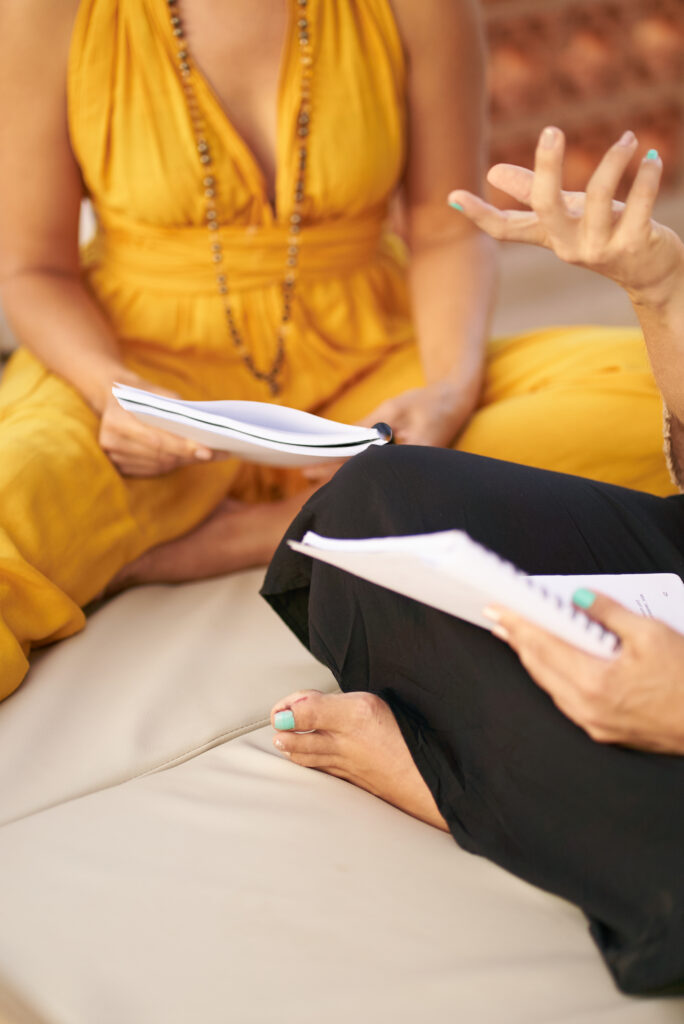Report of a systemic mindfulness coaching on the subject of alcohol addiction and the underlying need
Many people cannot imagine anything under mindfulness coaching, systemic consulting or the combination of coaching with yoga. Today a little insight:
You will know:
-With which topics you can come to a coaching to work on them
-How to view the topic as a systemic mindfulness coach
-What options you as a coach have to proceed
This can help:
– Tackling your own addiction or consciously getting help when it comes to that
You want to let go or work on an addiction
-You will get new impulses for your work as a systemic consultant/coach/therapist/
to give mindfulness coaches
– Present ideas and approaches that you may not have considered before
My client, Patricia (name changed) contacted me via email for coaching, saying that she wanted to talk about her alcohol consumption. I already knew the wonderfully strong woman and from joint online coaching. She had actively and successfully tackled many issues there and was clear about herself and her life, consciously taking care of her body differently through yoga and finding more and more confidence in herself and her body.
It didn’t surprise me that she wanted to address the topic of alcohol, since one’s own awareness of the body leads to looking more closely at what is good and what is not. If you have a strong will like her, as an assertive self-employed person, it is very annoying when you feel restricted in your own freedom and do not have the feeling that you can make the decision yourself. And that is exactly what she described to me at the beginning of the session. You’ve tried to drink less alcohol, but you just didn’t succeed.
She is not alone in this. Alcohol is an accepted drug that is tolerated in everyday life, and as such, addiction to alcohol is much more common than one might think. 8 million people consume alcohol in a health-endangering form and mostly it is about compensating for something. So you think it helps to enjoy life better, to feel more lightness, exuberance and joie de vivre, to no longer have to feel something or to feel more courageous and safer among people. Regardless of the fact that this is not really the case and the health damage to the body is immense, it is often not even known that mental illnesses are fueled or even triggered, such as depression or anxiety. At the beginning of the session, it makes sense to dedicate yourself to clarifying the topic during the consultation so that you develop awareness of yourself and your body.
My client’s goal was to be more mindful of her body and reduce alcohol. So I opened the space for the vision, her goal, her best result and her answer was loud and clear, “I don’t drink alcohol anymore!”. Here it is important that this need, this idea, is born out of her, because that is systemic advice at eye level. In a consultation, nothing should be put in the mouth. Instead, it’s about opening up space for what the client isn’t even thinking about at the moment when she’s looking at the problem rather than the solution. The constraint, “I can’t stop!” is ignored for the moment and instead guided to the best solution or possibility.
So she clearly knows what she wants at the beginning of the session, just not yet how to get there because it still seems impossible to her. Often, when something like this is said, a long explanation quickly follows as to why it is not possible and what is preventing you from achieving it. In this case it was the same. The clients said that she and her husband start with the first white wine spritzer every day when they come home after work. It was always like 2-4 white wine spritzers and that she couldn’t stop if he kept drinking.
What is interesting here is that sometimes you get so caught up in your own rituals that you have the feeling that someone else has to change in order for you to be able to change in the first place. Here it is important to point out exactly this area, for example by asking whether you actually do everything your partner does? In my work, I find the appreciation of one’s own perception and feelings very important, because of course it’s harder when someone is sitting next to you and drinking, and you’re allowed to express that. In addition, and this is different for each consultant, I also like to give personal examples and as a consultant I attach great importance to authenticity in my consultations, because firstly it is important for me to show that no one is perfect, but also to allow to be allowed that every human being has and may have growth potential. In this case it was that sometimes it’s really not easy to stay with yourself and sometimes I also have a hard time doing my own morning routine with meditation, breathing practice and yoga. So at that moment I dissolved the obstacle and the limiting thoughts together with her that she wouldn’t make it anyway because her partner would also drink alcohol.To delve deeper, you can look at two areas. One area is the routine that my client described, since it’s often easier to replace an addiction than, in this case, to just cut out the alcohol because it feels like something’s missing. So the new neural network relearns something.
The other area involves the fact that most addictions are about something deeper, which one wants to compensate for by, in this case, drinking alcohol. That is, one wants to achieve something by drinking alcohol. Becoming aware of this and looking at how I can “get” it is another approach here.
The routine can be queried with the simple W-questions, as in this case, “How much do you drink? What is drinking? When will it be drunk?” and then what it would be like to get non-alcoholic wine for the white wine spritzer to start with. My client knew straight away that she didn’t like him and we looked for alternatives together. She described to me that she likes a type of non-alcoholic sparkling wine, but it is incredibly expensive and that is why she has been too stingy to buy it. During the conversation, it became clear that it was very important for her to buy this non-alcoholic sparkling wine and always have it nice and cold in the fridge for an agreed period of time. At the same time, my client described that she would like to buy other non-alcoholic mixed drinks to try out in the summer. Within the routine we also went through the points that played a role. Put on something comfortable, sit down with your partner or on the sofa (since she has a standing job) and just relax.
Now we dived deeper and thus into the second area. As a coach, it’s about finding the deeper issue, what the real need is. However, the coachee is usually not aware of this connection, otherwise he/she would address it directly and try to change it. Incidentally, this approach plays a role in every coaching.
Here you can ask, for example, what the alcohol does for her and what she wants for the end of the day. In their answers, it quickly became clear that it was about switching off as quickly as possible from the moment after work, about enjoying and being able to let go. She associated that with the end of the day and the alcohol “helped” her because it “worked so much easier”.
When she found that out for herself, she became calmer and calmer because, after all, I had been working with her for a long time, that was the topic that occupied her from the start. To be able to let go of more hardness and masculinity in certain moments and to be able to invite more femininity and inner peace, lightness and relaxation into life and simply to do nothing and enjoy life.
As a coach, it often makes sense here to clarify the connection for the client using examples from the other sessions in order to facilitate the connection. But it’s about taking your time and “letting your brain rattle”. In moments like this, I often calm down, listen to the surprised client and the connections she makes, and can sometimes really feel like it’s clicked.
Now you can go more consciously into the substitute action. As a consultant, it makes sense to speak in metaphors, I spoke here about really celebrating the end of the day from now on and celebrating, maybe even buying a new comfortable outfit for it and consciously looking forward to it and not just yourself allow to turn off.
From the field of mindfulness, it is also about looking at what you can do on days when it is very difficult to create an intervention plan or a support plan, so to speak.
Here you can introduce a mindfulness exercise: sit down and breathe, perceive and feel what is there and what you need means: I need relaxation and rest right now, but I’m still in the “do and achieve” mode. Just noticing may be enough, or breaking the pattern with a 5-15 minute walk, a round of yoga, or creating guided relaxation.
Some people also benefit from a strong mantra, hers is, “I know I’m strong enough to give up alcohol completely!”. As a coach, I always offer different options and also check whether the word mantra or perhaps the sentence sounds better with the person.
Finally, as a coach, it helps to do a reality check, i.e. what to expect. In this case, friends and people will ask her why she doesn’t drink, and they may invite them or try to persuade them. By being aware of these things beforehand, it’s usually easier, should they happen, to deal with them calmly and to be able to distance myself. For a certain period of time it can also be helpful to avoid certain “dangerous situations”, such as meeting friends with whom you always drink a lot, in order to have enough strength to be able to distance yourself in these areas at some point.
If you have the feeling that it fits well, you can finally bring the client back into the energy of the future, at the moment when she is already completely free of alcohol. I love that because the body or the brain doesn’t recognize the difference between reality and visualization and so all cells fire and you build up the feeling of what it would be like. This makes it easier to implement many of them in reality, because you know how cool it feels and have “made” or “experienced” it before. As a coach, you can lead a meditation/exercise and hypnosystemically ask everything, e.g. “How do you look? How do you feel? where do you feel that What are you feeling? How do the others notice that? What’s the difference?” and so on and so forth.
If you want, you can also give the task of writing down what you feel, i.e. the answers of the visualization, at home.
I would like to point out again that it is my way of coaching and that every coach/therapist/consultant can and must find their own way and not every coachee needs the same thing, the chemistry between coachee and coach plays a major role.
If you liked this post, feel free to check out YouTube and Instagram, connect with me and feel free to share, maybe there is someone around you who will be inspired by reading! See you soon and have a wonderful day! Namaste
Hanna




